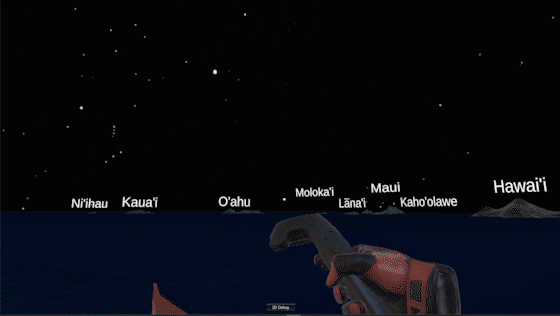Using virtual reality to create engaging situations for language learners, our team has begun development on an application for the Looking Glass, a desktop holographic display. Our application allows the user to interact with a virtual dog to encourage foreign vocabulary acquisition/practice. The user is guided through learning how to interact with their virtual companion through a narrator that utilizes an adaptive spaced repetition learning model to teach the user new vocabulary, providing a method of scaffolding as students progress through the program. The vocabulary learned will allow the user to play and take care of their virtual dog.
Through our application, users will be able to interact with a virtual dog to learn basic foreign vocabulary words and phrases. Developed on the Looking Glass, a desktop holographic display, our research observes the ways that comfort, immersion, and virtual feedback may improve a user’s confidence in their ability to speak in a foreign language. Through the utilization of voice recognition, a user will be able to “speak” to a virtual dog that will prompt the user to say various phrases to interact and take care of it. Our model is similar to that used for online flashcards due to the usage of an adaptive spaced repetition algorithm. This project also implements a scaffolding method in which as students continue to progress and correctly use the vocabulary that they are learning, the support given by the system will fade in terms of the prompts and pronunciation guide. Our program is able to provide meaningful and engaging contexts for generating language, which seems to be a weakness in many automated vocabulary learning software (Nakata,2011). Although development on the Looking Glass is our current focus, due to the programming done in Unity, the program has the capability of being deployed on other virtual reality or augmented reality hardware. The target language implemented in our current prototype is Hawaiian, but the application has the ability to swap dictionaries so that other languages can be utilized with the same program. We chose to implement Hawaiian for our prototype due to our positions at the University of Hawai’i, and because most people are unfamiliar with the language. We hope to better observe how users are learning the basic vocabulary of a language without relying on their prior exposure to the language.
This project was developed by myself, Denis Melik-Tangiyev, Kurt Nikatani, and Tristan Palanca
It was set to be showcased at CALICO 2020, but was canceled due to COVID -9.
Short video clip from the final presentation day for the Virtual Reality class that this project was developed in.





